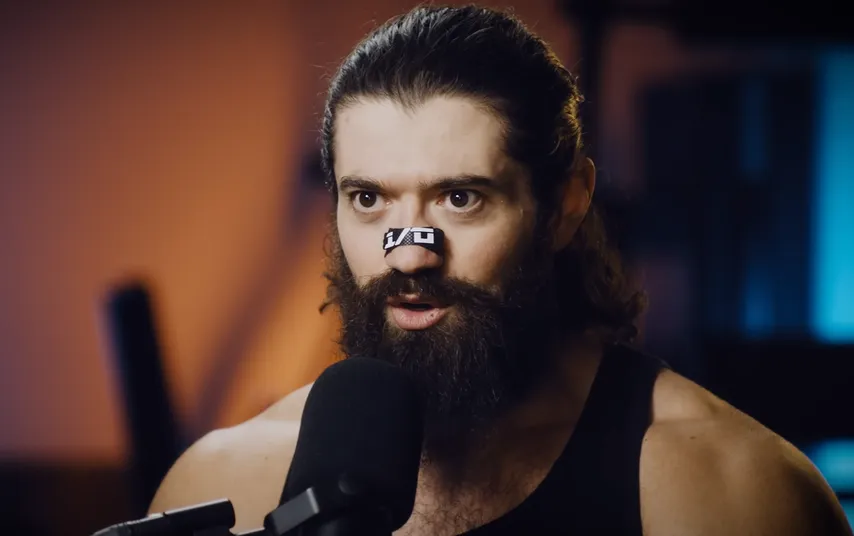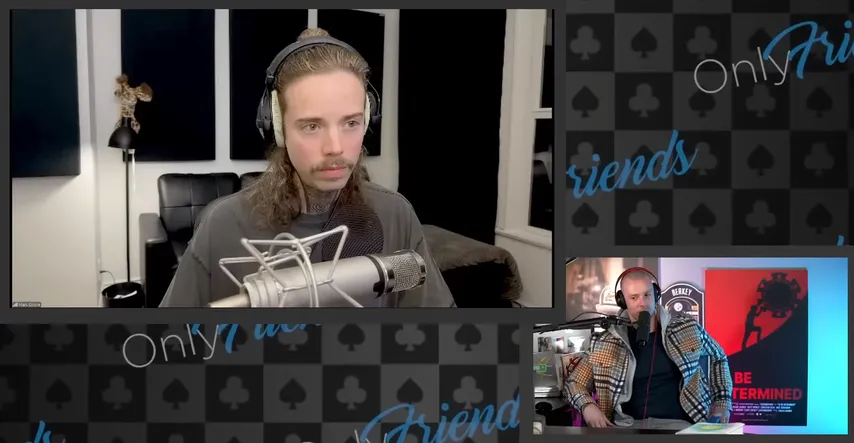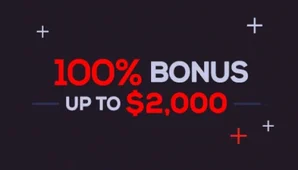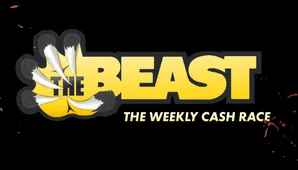Marc Goone started playing in 2015 at $1/$2 and within a few years had moved up to $10/20/40 (the highest public stakes in Los Angeles). He is now a frequent guest at private games at Hustler and other US casinos.
At the beginning of the summer, Marc decided to conduct an experiment – is it possible to win $100 per hour at $5/$5 tables with a $1k cap.
Marc is documenting his challenge on the Hungry Horse Poker YouTube channel.
At the moment it is running slightly ahead of schedule. "I'll tell you guys what, Marc said at the end of Episode 10, "I was starting to get a little nervous, but we are back on track baby! What. A. Session."

– You know, I started this session down about $2,000, and I was actually thinking, "You know what? I've never gone on a downswing bigger than $5,000 at $5/5. It's like impossible if you're making over 15 big blinds an hour. How is this going to happen?" Then I realized it's not going to happen. I went from down $2,000 to up over $3,000—a pretty nice swing of events there. I ended the session up about $3,000 and some change after playing just under 10 hours.
We're back on track; I've played just under 150 hours at this point and I'm making about $115 an hour. So we are on pace after a nice little session.
Marc has a special love for commenters. After another vlog, he wrote:
– "If I could play poker against the comments section from my $100/hr challenge vlogs I'd probably change it to the $250/hr challenge."
Having played 200 hours in the marathon (he posts vlogs with a delay), Marc invited readers to ask him any questions :
– "ASK ME ANYTHING about the challenge so far, or any poker related questions you may have. i’ll answer every (reasonable) question for the next hour."
– What’s your fav/most common exploit when playing low stakes?
- A few:
- X range OOP HU
- Treating their big sizes = strong hands
- Relentlessly attacking capped ranges on turns/rivers
– I'm playing live tomorrow night with no great players in a rake-free game. I come to you and I say Mr. Squish, look man, I've seen all your videos, but I need one more thing. Can you give me one piece of super advice to crush tomorrow?
– It is more profitable to assume everyone sucks than vice versa.
– What is your favorite stake to play at? Not necessarily the most profitable but in terms of overall enjoyment from competition + player demographic
– Probably $25/$50. small enough to still feel super comfortable but big enough to get the blood pumping a bit.
– What assumptions about the player pool tendencies have you updated?
– Ppl are much more willing to fold decent hands now than 5+ years ago
– How big a part of your strategy will game selection/table selection be during the challenge?
– I very very very rarely table change. think I’ve done it twice in 165 hours so far. only when there are 3+ short stacks at the table will I consider it. Otherwise, I just stay and wait it out.
Energy is better spent on learning players' tendencies and exploiting them rather than table change
– So….100/hr for how many hours? Obviously, it's incredibly possible or easy for the short term.
– Shooting for 250+
– 1) How many hours do you estimate of study that would be needed to do this? 10? 20? 100? 1000?
2) How much higher variance spots do you think it takes to achieve this. Basically putting villains to the test as many prefer lower variance spots and overfold.
– 1) some ppl are capable with 100. some ppl never. Depends!
2) I don’t think about variance ever. take the highest EV line independently in every hand always, and your win rate will be so high you’ll have way less downswings than someone concerned about variance.
– How has the game changed since your $5/5 glory days? Are they tougher?
– No, everyone still sucks.
– How did you feel playing online helped your game if at all?
– Actually made me much better at exploiting fish. how to play vs donks, how aggressively to iso, when to flat relatively strong hands vs regs when fish in blinds, etc.
And then of course, got better vs strong regs.
– Sounds like you’re brainwashing yourself with a limiting belief of $100hr. Why not just see how much you can make per hour pushing yourself hard as you can? Maybe it’ll be easy to pull $500hr, or 1K.
– Because I reside in a place known as reality.
– Do you think there is still good ROI on poker vs say a part-time job at low stakes? Like…Could a studied bankrolled player taking high EV lines potentially make an extra 40k a year playing 1/3, 2/5?
– I think a solid player could make $100k+ relatively easily at $2/5. I did it my FIRST year playing full time and I sucked.
– What are the keys to breathing out of your nose? Seems important to poker success.
– I think you gotta wear those Hormozi nose strips.

A couple of weeks ago, Marc discussed his marathon on the Solve For Why podcast with Matt Berkey.
Marc Goone – I'm not going to play a thousand hours; I would probably shoot myself.
I don't care about the sample anymore, I'm going to do 300 hands, I think, and then I'm done because it's enough. I know people will say that whatever the hourly is going to be doesn’t matter because 300 hours doesn't represent anything. The point isn't that these samples are representative; the point is that this stuff works—being aggressive works, bluffing works, and overfolding works.
I don't really care what the final number is.
Landon Tice – It's interesting just in the sense that when the sample is so low, it's hard to make necessary conclusions about what is and isn't true. But as someone who plays in all the spots or has all the decision points, you can sort of feel out for yourself how well you're doing. You play enough live poker at these stakes and realize, "Okay, I've played 20 sessions at this point and had this many spots where I've been able to get a check-raise all-in against someone who's probably not going to fold their value hand." You feel this way and get the results you want; at some point, it's not just bias. Does that make sense?
Marc Goone – You see a lot in 250 hours, and I know it's not big enough to definitively say that this hourly is doable, but you can observe a lot in those hours from showdowns. Especially when people are deviating so far from what a baseline would look like, you can come to conclusions much quicker.
Matt Berkey – I think one of the bigger takeaways here is that in live poker, you're never really going to get a big enough sample that's consistent. The player pool is continually churning and changing. Even my sample is probably as close to reliable as I've ever had in my career—I've been playing the same game for about two years with roughly 3,000 hours. That's probably a pretty stable win rate, especially since it's been relatively consistent from hour 10 through hour 3,000.

But even still, I think what Landon's talking about is so much more important because when you can't get true volume—when you can't really test the extremes and know what a bottom 5% run looks like or a top 5% run—what you can measure and what’s tangible is how often you're put into areas or situations that are very negligible EV. How often are you put into a zero EV spot? How often are you put into a negative EV spot or a slightly winning spot session over session, week over week, month over month, year over year.
I don't want to speak for you, but if I'm being completely honest, it’s less than once a session; it’s maybe less than 100 times a year.
Marc Goone – When I was grinding hard on Ignition during late COVID, I was facing six really hard spots an hour.
Matt Berkey – That’s what I don’t think people understand: when I play an online Sunday—which I don’t even take all that seriously—I leave with like a dozen hands that I want to look up and study afterward. I might go a month without truly having a spot I want to analyze from playing live.
Marc Goone – It's very different; people just don’t get put into spots as often. But I think the cool part about live poker is that because there are so many variables—unlike online where you're playing 100 big blinds—it’s very technical online at those stakes. It’s about being precise and finding the right frequencies. In contrast, at 200 or 300 big blinds in live poker, there’s so much more going on.
Like, say there's one player at the table who is a decent winning player, playing for a living. They may be winning seven or eight big blinds an hour or whatever, and you have six people behind you who can't even breathe out of their mouths or noses. Well, this guy opens under the gun, and you're in early position with pocket Queens. Suddenly, it's already interesting what you do with a hand like that because you've got two guys in the blinds who may just punt off 300 big blinds with top pair. The game tree is so much more complex live than online.
Matt Berkey – Yeah, there's a lot of f***ing around and finding out. Street poker is real. Freestyling is so valuable if you have a well-trained subconscious. The unconscious learning that takes place from observing and recognizing patterns—things that you can't really articulate but have a high degree of confidence in—makes a huge difference.
I think we’re finally getting to a point where we’re letting the two worlds reside on their own. We’re saying, "You know what? We're not going to compare the Linus Loves and the Barons of the world to Garrett Adelstein and whoever else is out doing the dirty work in the live streets." They’re just not the same; the earning potential isn't the same, the skill set isn't the same, and the style of play doesn't align either.




